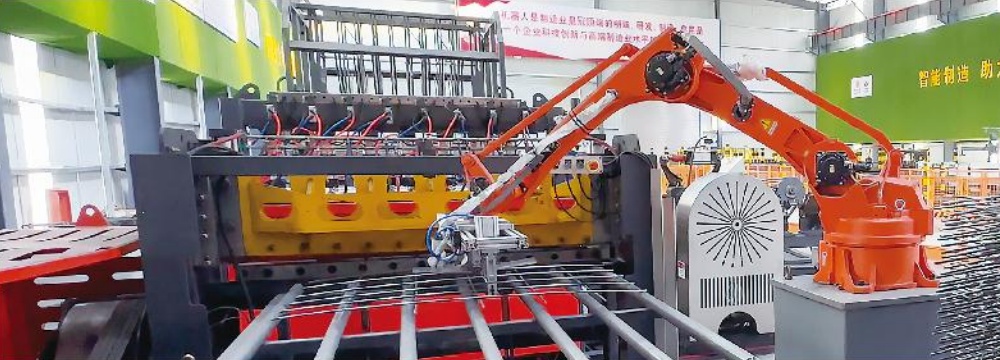
Mesh Panel Automatic Production Line
Production Process Flowchart
Longitudinal Reinforcement Material Rack
Traction
Mechanism
Stepper
Mechanism
Main Frame
Mechanism
Falling Material
Mechanism for Longitu-
dinal and Transverse
Reinforcement Welding
Shearing
Mechanism
Mesh Panel
Discharge
Robotic
Transfer and
Stacking
Transverse
Reinforcement
Material Rack
Straightening
Mechanism
Stepper
Mechanism
Falling Material
Mechanism for Longitu-
dinal and Transverse
Reinforcement Welding
Marking and
Discharge
Packaging
Machine for
Wrapping
Packaging
Line Transport
Production Line Features
Both longitudinal and transverse reinforcements are fed from coil, eliminating the need for pre-cutting;
Parameterized settings for rapid programming of new specifications;
Resistance welding process is used, which is fast (40-50 transverse reinforcements per minute);
The mesh panel is highly adaptable, suitable for both wide and narrow applications, offering multi-functionality in one
machine;
Fully automatic design integrates processes such as straightening, traction, material storage, stepping,falling material,
shearing, group welding, stacking, counting, and packaging into a continuous operation.
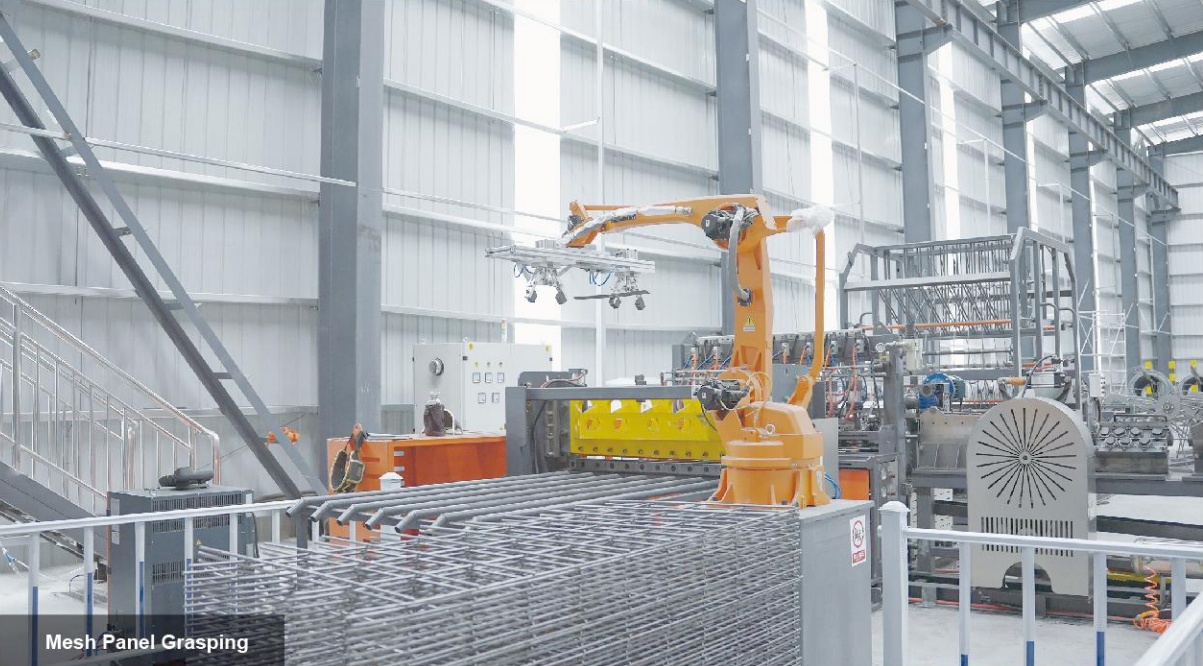
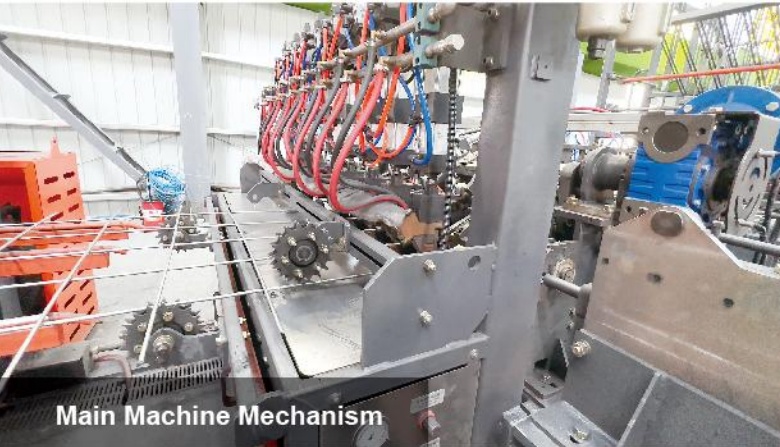
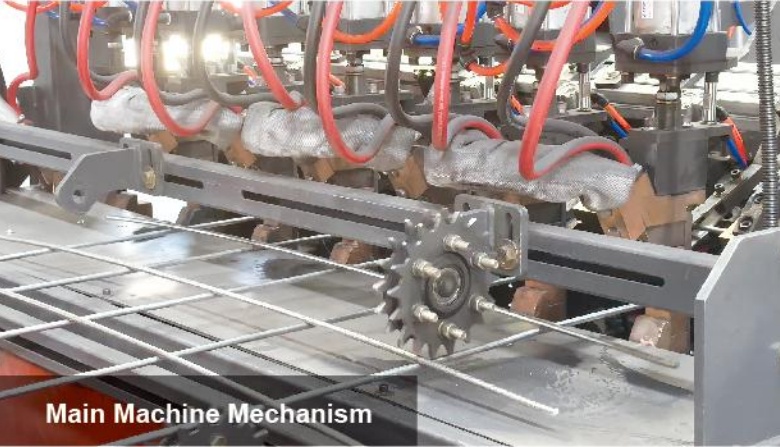
Core Advantages
Fully automatic design, equipped with robotic material picking and stacking operations, significantly enhancing production efficiency.
GLOBAL TOP 500
Electrical Equipment
Manufacturer’s Robotic
3D Flexible Cutting Innovation
A leading company within the Global Top 500,this electricalequipment manufacturing giant specializes in the R&D,design, manufacturing, and sale of power generation equip-ment. The enterprise adeptly addresses the complex cuttingneeds of various components, including hydro turbine-gener-ating units, steam turbines, wind turbine units, nuclear powerunits, and auxiliary equipment.

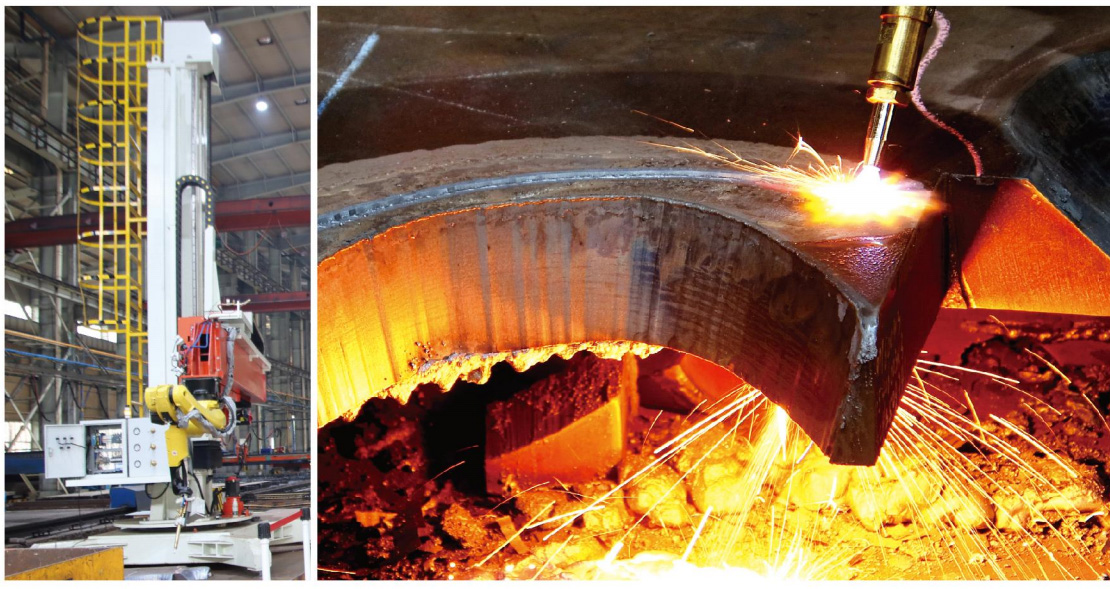
Project Pain Points
- Traditional CNC cutting methods are challenged by spatially complex surfaces, often requiring manualintervention from skilled workers, leading to inefficiencies and inconsistent precision.
- Manual cutting is constrained by the operator’s skill level and susceptible to environmental and emotionalinfluences, heightening the risk of safety incidents.
- Existing cutting technologies fall behind in achieving refined, automated, and intelligent management,hindering further advancements in technical processes.
Project Achievements
The system excels in meeting the cutting requirements for a variety of uniquely-shaped workpieces, includingcircular, fan-shaped structures, conical tanks, and cylinders. This not only enhances cutting efficiency andaccuracy but also significantly reduces labor intensity and operational costs. Moreover, the system incorpo-rates automation and intelligence, fulfilling cutting needs in various scenarios.
Solution Highlights
- Integration of a six-axis robot, known for its high precision, speed, and reliability.
- This robot can flexiblyadjust its posture and cutting paths, effectively handling the cutting of complex-shaped workpieces.
- Development of a dedicated thick-plate flame cutting system that enables digital management of cuttingparameters, characterized by rapid cutting, high efficiency, and low cost.Implementation of a 3D vision system for quick acquisition of the workpiece’s 3D model, removing theneed for original blueprints and enabling full computerization from workpiece identification to robot cuttingtrajectory programming and parameter matching.
- Designing a cross-arm manipulator as an external axis for the robot, which expands the robot’s workingrange, allowing it to perform extensive, continuous cutting of large workpieces.
- Developing an in-house software control system featuring an intuitive interface and an extensive expertprocess library.
- This system integrates control over the robot, flame cutting system, 3D vision system, andelectrical system, achieving a fully automated and intelligent cutting process.
GLOBAL TOP 500
Heavy Equipment
Manufacturing Enterprise
EVS Welding Workstation
A major company within the Global Top 500 specializing inheavy equipment manufacturing, with products ranging fromlifting equipment, mining equipment, wind power equipment,marine equipment, rail transit, to construction machinery.
Thisenterprise has integratedEVS programming-freerobotic welding stations in their production, significantlyreducing labor intensity and operation difficulty for workers,and enhancing production management efficiency.

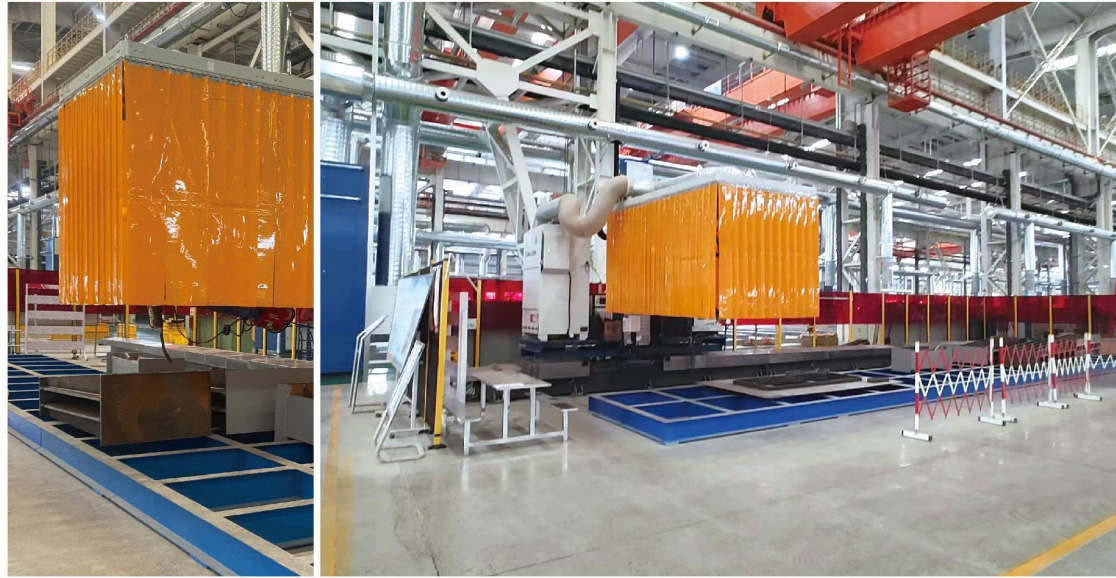
Project Pain Points
- The main beam rebar plate components of cranes are diverse, consisting of rebar plates, reinforcing rings,wire loops, etc.
- Traditional manual welding methods are inefficient, with long production cycles, demand-ing high skill levels from workers, prone to errors, and unable to guarantee consistent welding quality.
- In the client’s existing production process, the welding of rebar plates was manually operated, posingsafety risks and resulting in inconsistent welding quality, thus affecting the product quality.
Project Achievements
- The implementation of theEVS Welding Workstation has realized intelligent production for theproduction line, greatly enhancing production efficiency and reducing production cycles.
- Reduced labor intensity and operational difficulty for workers, minimized safety hazards, and enhancedwelding quality stability.
- Achieved equipment informatization and visualization, improving the efficiency and precision of productionmanagement.
- Met customer demands, enabling customized production of small batches of various products, enhancingmarket competitiveness.
Solution Highlights
- Utilize a rebar plate welding robot workstation: Comprising an inverted 6-axis welding robot system, a2-axis mobile (X-axis walking and Z-axis lifting using an external robotic axis) inverted single-robot cantile-ver slide system, a horizontally fixed working platform (provided by the client, 200-400mm above ground),a 3D vision scanning system for robots, and a centralized welding smoke purification system.Adopt programming-free design, allowing users to simply place the workpiece in position.
- The system willautomatically scan the workpiece, generate scanning trajectories, and automatically match weldingprocesses for multi-station, multi-workpiece automated operation.
- The workstation features equipment informatization and visualization with MES interface, enabling inter-connection with production management systems to enhance efficiency and precision.
- Comprehensive service support is provided, including research, experimental validation,installation,debugging, and training, to assist clients in effectively utilizing and operating the product.
GLOBAL TOP 500
Rail Transit Enterprise
EVS Welding Workstation
Aleading enterprise within the Global Top 500, specializing inrail transit, has integrated theEVS welding worksta-tion for welding the side and end walls of various open-top railfreight cars.
This integration has significantly advanced weld-ing practices in terms of precision, efficiency, and automation,enhancing welding quality and efficiency, while reducing laborintensity and health hazards for workers.

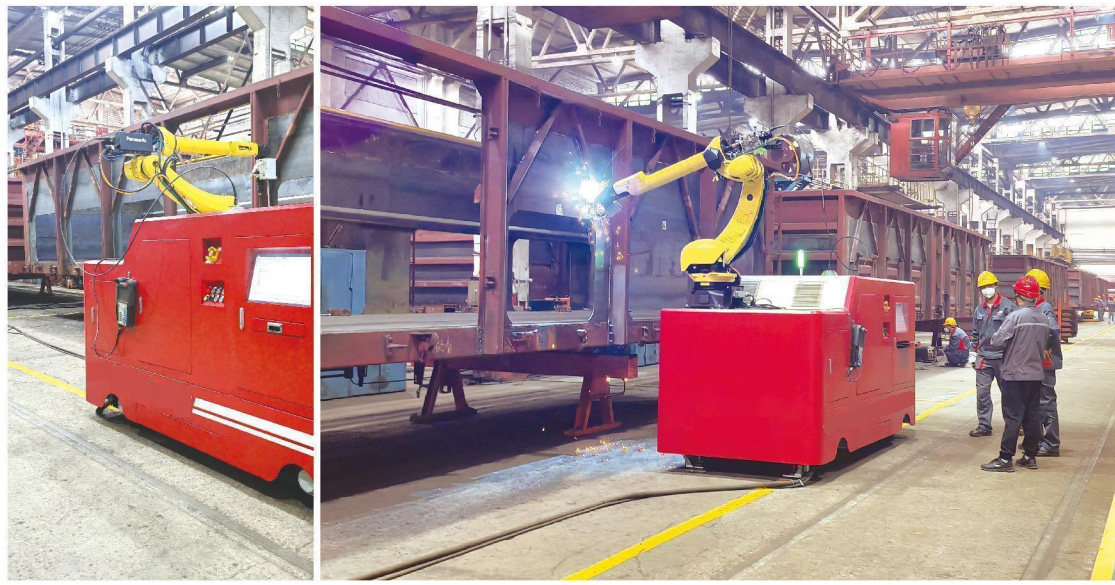
Project Pain Points
- In the maintenance of open railway freight cars, extensive repair welding work is required due to severe defor-mation of carriages.
- Traditional manual welding methods are inefficient and produce inconsistent quality, withthe generation of harmful gases during welding posing health risks to workers.
Project Achievements
- The project has successfully automated the welding of four different types of seams on the exteriors of freightcarriages.
- This system features high precision, efficiency, and a high degree of automation,significantlyimproving welding quality and efficiency, reducing labor intensity, and minimizing the hazards involved in thewelding process.
Solution Highlights
- The advanced EVS Welding Robot, integrated with visual scanning technology and a roboticcontrol system, has enabled efficient and precise automated welding.
- The robotic welder boasts full-range mobility, autonomous navigation, and precise positioning.
- Utilizingvisual scanning technology, the robot accurately identifies the location and shape of the weld seams,autonomously generating the robot’s posture and trajectory, and matching welding parameters to flawless-ly execute the repair welding process for freight carriages.
GLOBAL TOP 500 Rail Transit Enterprise EVS Cutting Station
An influential company within the Global Top 500 specializingin rail transit, focuses on the repair and remanufacturing ofvehicles, mechanical components, and structural construc-tions. To enhance efficiency, precision, and reduce costs, thecompany has integrated theEVS Cutting Station, auto-mating the robotic cutting of railway gondola side and endwalls. It stands out for its efficiency, accuracy, and cost-savingbenefits, ensuring longer service life, and enhanced perfor-mance and safety for vehicle components.

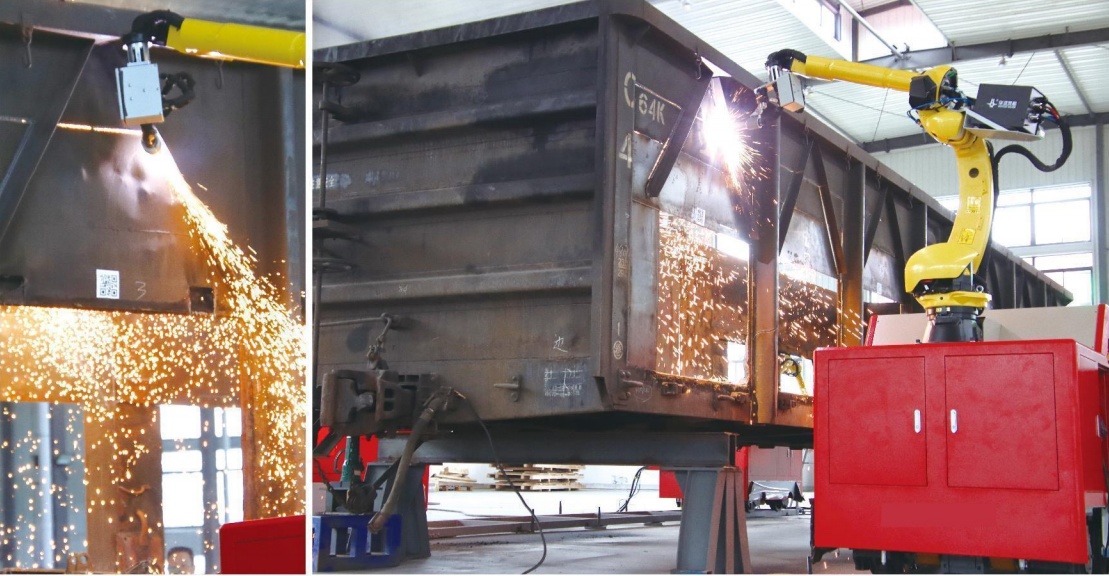
Project Pain Points
In traditional cutting and repair processes, workers manually operated cutting equipment, leading to inefficien-cies, poor cutting accuracy, and high costs. For large vehicles or structures, multiple workers needed to collab-orate, facing a significant workload and challenging working conditions. Improving the automation and preci-sion of the cutting process became a pressing issue for the enterprise.
Project Achievements
The introduction of theEVSCutting Station led to significant achievements: Firstly, it innovativelyapplied robotic cutting across the industry, automating the cutting process for freight carriages and significantlyenhancing technology equipment and production management levels.
Secondly, the application of machinevision technology introduced new methods for enhancing traditional processes, laying the groundwork for thecomprehensive implementation of robotic maintenance processes.
Solution Highlights
- EVS Cutting Station employs advanced plasma cutting equipment, robotic control technology,3Dvision, and computer control technology, achieving a highly automated and intelligent cutting process.
- The workstation includes five automatic plasma cutting devices, a central control system, and a rail-mount-ed platform for movement. The central control system coordinates and controls the entire workstation,including the movements of cutting devices and robots.
- The robot system executes the central controlsystem’s commands, accurately completing the cutting trajectories.The system features high cutting precision, a wide working range, and advanced technology.
- The position-ing accuracy for the vehicle body is ±30mm, with a maximum movement range of 6 meters.
- The maximumtargeted cutting area is 2000mm x 2000mm. The system operates fully automatically, with the entirevehicle cutting process completed in less than 45 minutes.
GLOBAL TOP 500 Intelligent and Flexible Production of Energy Enterprises
In the production of drilling equipment for petroleum machin-ery, there are numerous types and complex structures ofdrilling rig frame components. The integration of the EVSwelding machine has significantly enhanced productionefficiency, making it a benchmark case for welding operationson drilling rig frame components.

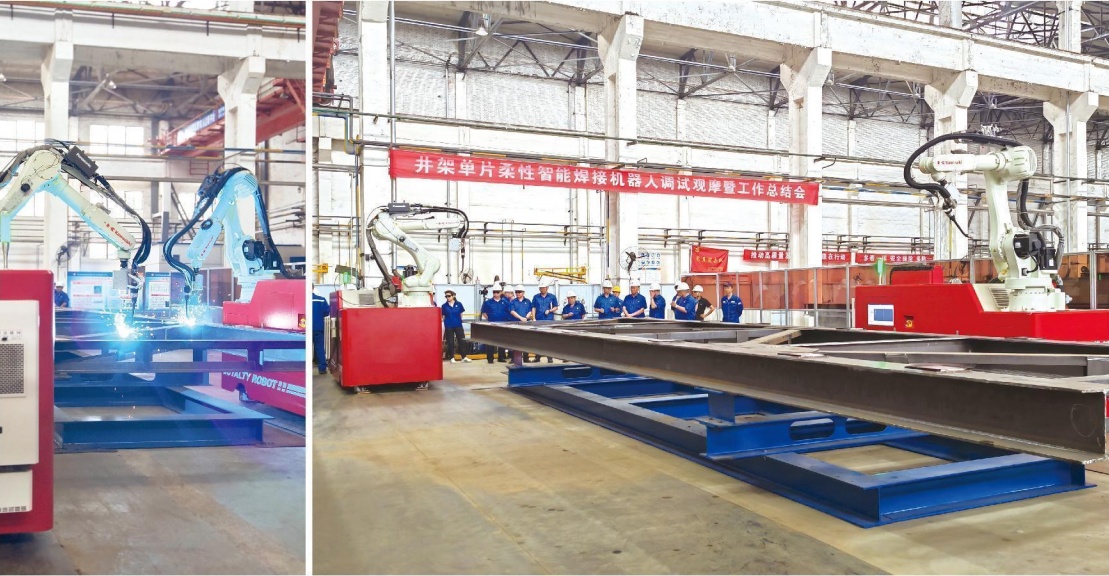
Project Pain Points
In the production of drilling rig frames, the manufacturing process involves various welding methods, such asT-joint vertical welding seams, plate butt joint vertical welding interlayer seams, plate butt joint horizontal weld-ing seams.
These diverse and complex welding operations are constrained by the instability and inefficiencyof manual operations, making it difficult to ensure welding quality and failing to meet the stringent efficiencyand quality requirements of modern drilling projects.
Project Achievements
Robotic welding technology has substantially improved welding accuracy and efficiency, far exceedingindustry standards in welding reach rates.
Significantly reduces the labor intensity of workers, optimizes welding quality, lowers operational risks,enhances productivity, and reduces production costs.
Has profoundly impacted the production efficiency and welding operation quality in the entire petroleummachinery production industry.
Solution Highlights
- Employing theEVS”Navigator Welder” welding robot integrated with intelligent 3D vision and flexible weld-ing technology.
- The robot is equipped with mecanum wheels, providing omnidirectional movement, intelligent walking, andautonomous navigation to meet flexible operational needs.
- The robot autonomously performs welding operations, with easy one-click start-up, eliminating the needfor manual programming and welding process formulation.
- During operations, it can automatically adjust the welding gun’s position and posture, achieving workpiecepositioning, seam tracking, and precise seam tracking capability (less than 1mm accuracy).
- The “Navigator Welder” also enables remote monitoring and multi-device management, enhancingefficiency and reducing reliance on manual labor.

